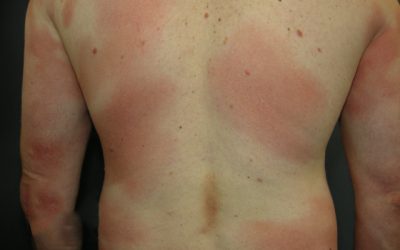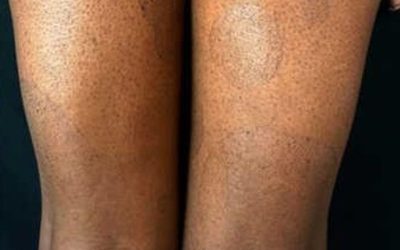Viral warts

● According to the place of origin can be divided into skin and mucous membranes
●It is common among school-aged children, but can occur at any age
● It is more common in people with dermatitis or people with weak immunity and HIV infection


Viral warts are characterized by:
● hard, rusty surface
● small red, black dots can be seen
● can be single or arranged in groups of different sizes
● warts come in different shapes: cauliflower, flat, finger-shaped
● localization: often face, soles, hands, thighs
Diagnostics
The patient’s survey and examination data are usually sufficient to establish the diagnosis. If possible, dermatoscopy of the formation can be performed. In rare cases, a skin biopsy is required
Treatment is often not needed as warts tend to disappear on their own, especially in children.
Active treatment may be necessary:
- if the patient’s immune system is severely weakened
- if complications started
- if the patient wishes for cosmetic reasons
The main goal of treatment is to remove cells damaged by the virus. If HPV remains in the body, the warts may recur.
For treatment can be used:
- applied drugs with salicylic acid, acetic monochloric acid
- cryotherapy (freezing the wart with liquid nitrogen)
- curettage or cauterization (wart removal by scraping with a curette or cauterization)
Prevention
- Do not pick warts, do not touch them with your hands, avoid direct contact with people who have warts.
- Wear your own shoes when visiting swimming pools and saunas.
- Use barrier contraception to prevent genital warts.
- Human papilloma virus infection can be prevented by vaccination, which helps prevent the appearance of warts in the genital area and anus.

Peeling skin syndrome
Peeling skin syndrome is a genetic disorder characterized by constant peeling of the skin. The disease appears from birth or in the first year of life
lasts a lifetime
Mycosis Fungoides
The most common primary skin T-cell lymphoma (cancer of the blood). Mycosis Fungoides is characterized by three main stages, several of which may exist at the same time
Paraneoplastic dermatological manifestation of gastrointestinal malignancies
rare disorders resulting from the immune system’s response to a cancerous process (neoplasia) in the body. Gastrointestinal neoplasms more often cause paraneoplastic syndromes affecting the skin.



